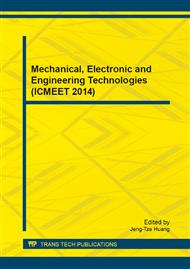p.91
p.95
p.100
p.104
p.108
p.113
p.118
p.122
p.127
The Effect of Loading Path on Forming Results in Multi-Gripper Flexible Stretch Forming
Abstract:
Multi-gripper flexible stretch forming (MGFSF) is a recent technological innovation of sheet metal flexible forming process. Straight jaws in traditional stretch forming machine are replaced by a pair of opposed clamping mechanisms which can move relative to each other. Taking the case of forming a sheet metal into spherical surface by stretching the sheet in two opposite directions, the finite element models of MGFSF under various loading paths were established and the effects on stretch amount, strain and thickness of the simulated parts were analyzed comparatively. It is founded that compared to the horizontal-tilting (HT) and horizontal-vertical (HV) loading paths, the horizontal-tilting-vertical (HTV) loading path would result in more uniform stretch amount, strain and thickness distributions also with lower strain and thickness reduction, which improves the forming quality significantly. Finite element simulations also revealed that the material flow state in the transition zone can be improved effectively and the local strain concentration can be greatly suppressed with reasonable loading path, which would decrease the possibility of material failure.
Info:
Periodical:
Pages:
108-112
Citation:
Online since:
April 2014
Authors:
Keywords:
Price:
Сopyright:
© 2014 Trans Tech Publications Ltd. All Rights Reserved
Share:
Citation:


